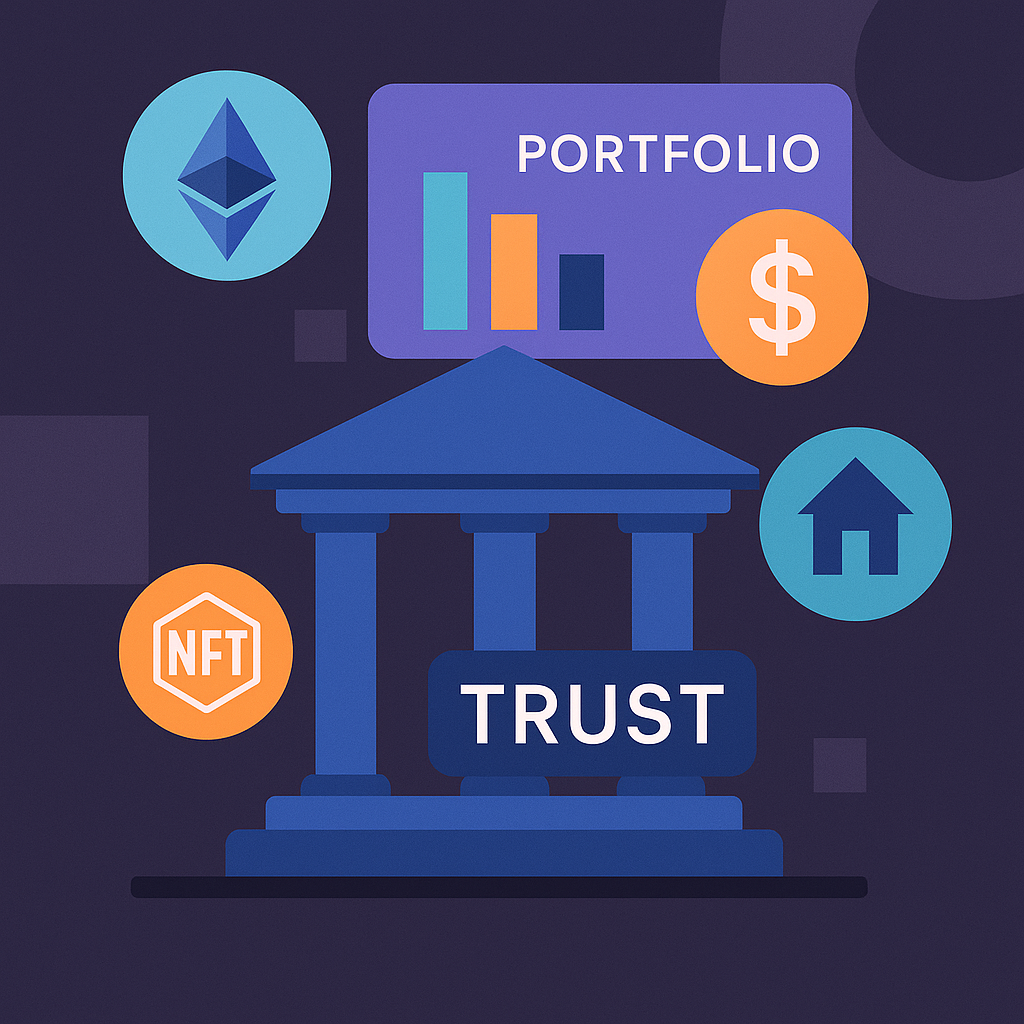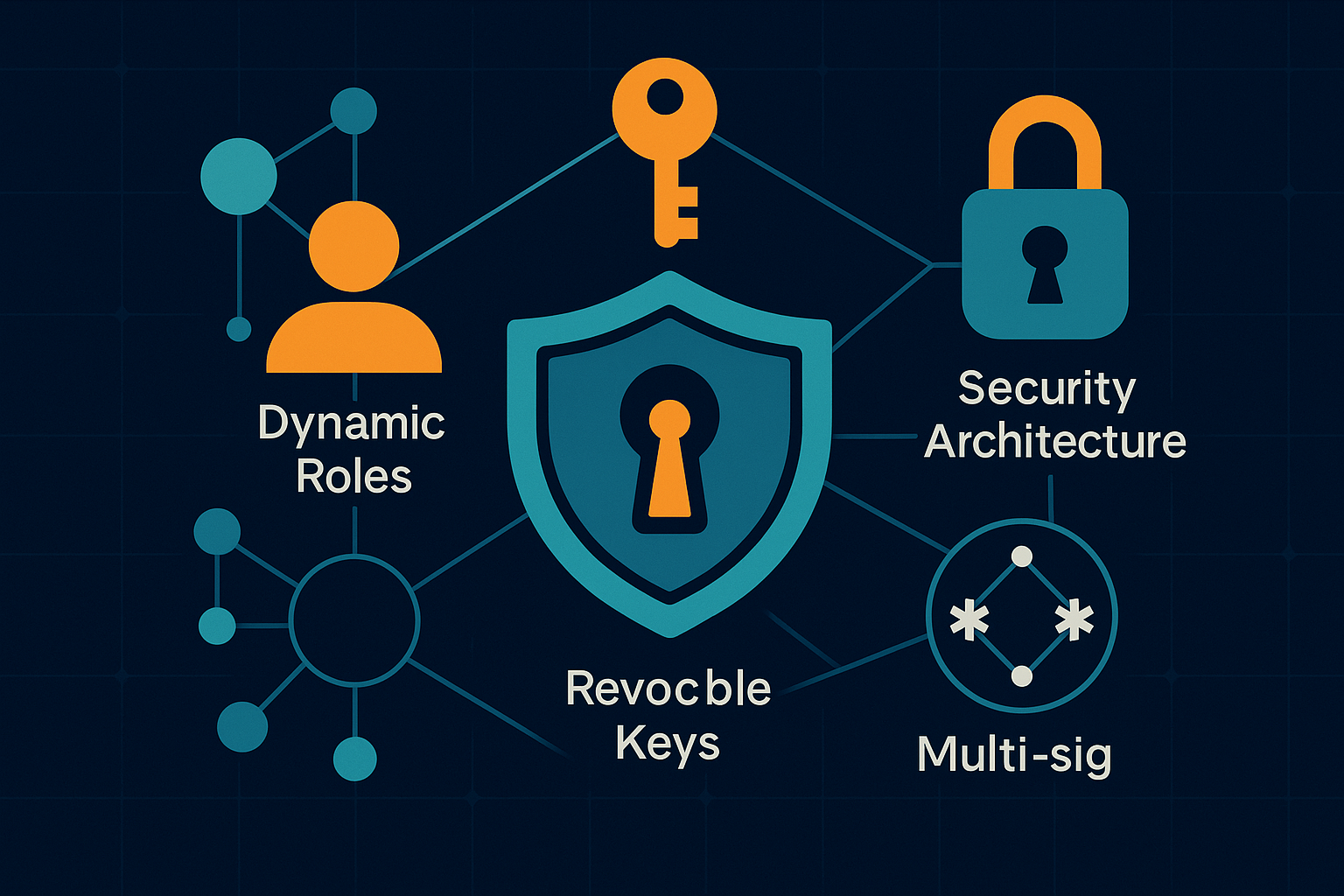Managing a trust is no longer limited to holding cash or a single real estate deed. In the on-chain world, trusts can be dynamic financial engines—capable of holding, tracking, and rebalancing diverse portfolios in real time. With WorthyTrust, you can manage multiple asset classes inside a single programmable trust, from ETH and stablecoins to tokenized real-world assets (RWAs) and DAO tokens. This article breaks down how our trust architecture supports multi-asset portfolios, why that matters, and how to get started.
Why Multi-Asset Trusts Matter
In traditional finance, trusts often underperform because they rely on static allocation, limited visibility, and rigid management structures. A typical trust might hold a property deed, a cash balance, and maybe a few mutual funds—each siloed in separate accounts and subject to costly trustee oversight. But Web3-native trusts change that. By managing a portfolio directly inside the trust vault, you reduce overhead, improve capital efficiency, and gain the flexibility to respond to market changes without triggering legal delays.
Multi-asset programmable trusts also allow for more sophisticated planning: you can hedge volatility with stablecoins, stake a portion of ETH for yield, or segment assets by beneficiary type. It’s wealth preservation with real-time control.
What Types of Assets Can Be Held?
WorthyTrust supports any Ethereum-compatible digital asset, including:
- ETH and wrapped ETH (wETH)
- Stablecoins like USDC, DAI, USDT
- ERC-20 tokens (governance, utility, LP tokens)
- Tokenized RWAs such as real estate, carbon credits, or revenue-share agreements
- NFTs (optional, for trusts based on digital art, domain names, or IP)
Each asset is stored directly within the trust contract, eliminating the need for off-chain wallets, spreadsheets, or custodial services. All holdings are transparently viewable via the WorthyTrust dashboard or any block explorer.
Real-Time Portfolio Visibility
Once assets are deposited into a trust, the Portfolio Management interface provides real-time tracking. Each token is listed with live market values, historical performance charts, and allocation percentages. You’ll know exactly how much of the trust is in stablecoins, growth tokens, or yield-bearing assets at any given time.
This real-time visibility isn’t just for the grantor—it can be optionally extended to trustees and beneficiaries, creating radical transparency that builds trust (in both senses of the word).
Built-In Rebalancing Logic
One of the most powerful features of WorthyTrust’s multi-asset design is automated or manual rebalancing. If you set a target allocation—say, 40% ETH, 40% USDC, and 20% tokenized real estate—the smart contract can trigger rebalancing actions when those weights drift due to market movement.
Rebalancing can be triggered in three ways:
- Manually through the dashboard
- Automatically on a time-based schedule (e.g. quarterly)
- Event-driven, such as ETH price volatility or oracle signals
The system uses decentralized exchanges (DEXs) and liquidity aggregators to execute swaps securely and cost-efficiently. You remain in full control with thresholds, limits, and slippage settings to protect your trust’s integrity.
Assigning Assets to Beneficiaries
With multi-asset trusts, you can allocate specific assets to individual beneficiaries or assign percentage-based shares across the whole portfolio. This is particularly useful when different beneficiaries have different goals.
For example:
- A minor child may be assigned stablecoins with a slow-release schedule.
- A DAO may be granted governance tokens that unlock based on community milestones.
- A sibling might receive a fixed ETH amount upon a life event or date.
All of this is configured inside the TrustOS Builder with no legal drafting required. The allocations are codified, enforced by the smart contract, and visible to all parties.
Mitigating Risk Through Diversification
Crypto markets are volatile—but so is the global economy. Holding a diversified basket of assets in your trust helps protect against sudden downturns. You can segment assets by stability, risk, and liquidity—keeping high-volatility tokens as a growth strategy while anchoring long-term goals in tokenized treasuries or USDC.
Trusts with a clear diversification logic are also more resilient to external shocks. If one asset collapses, others may compensate—ensuring your trust remains solvent, aligned with your original intent, and executable when the time comes.
Tax and Compliance Considerations
Because everything happens on-chain, asset flows and ownership events are immutably recorded. This simplifies reporting for jurisdictions that accept crypto disclosures—but you should still consult a tax advisor for local requirements. WorthyTrust’s future roadmap includes optional reporting modules that allow for automated tax-ready summaries and audit trails.
Compliance is handled via modular plug-ins. For example, if you’re allocating tokenized securities, you can enable a KYC/AML layer or restrict transfers to whitelisted wallets. These tools help you stay compliant without compromising automation or decentralization.
How to Set Up a Multi-Asset Trust
- Connect your wallet at worthytrust.io
- Choose a trust template: Inheritance, Treasury, or Custom
- Define roles and beneficiaries
- Deposit your assets—multiple tokens across different categories
- Set portfolio targets and rules
- Deploy the trust contract
- Monitor, rebalance, and manage assets in real time
The entire process takes less than 30 minutes, and the trust remains fully autonomous once live.
Conclusion
WorthyTrust makes it easy to build and manage a multi-asset portfolio inside a programmable, on-chain trust. Whether you're planning a digital inheritance, funding a DAO treasury, or protecting assets from market swings, our system gives you the tools to do it all—without lawyers, banks, or spreadsheets. The future of wealth management isn’t just decentralized—it’s dynamic, transparent, and built to adapt.
Start building your multi-asset trust today at WorthyTrust.io.



